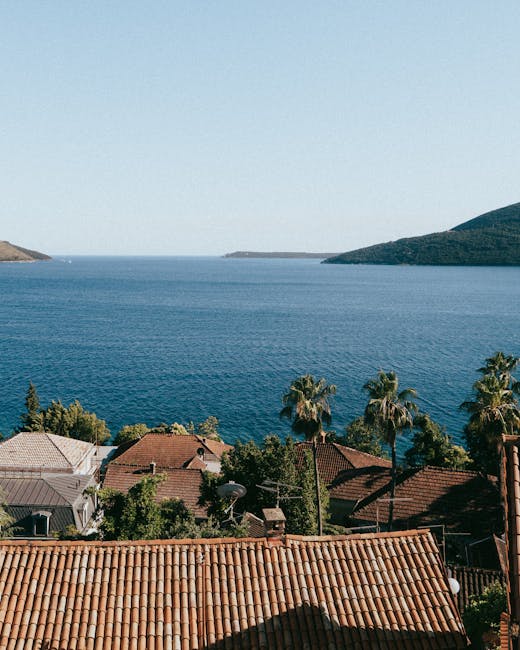Stability of the Luxury Real Estate Market on the Adriatic
The stability of the luxury real estate market on the Adriatic, along with visible demand growth, confirms that precise market analysis and a thoughtful, sustainable business strategy make the difference between a successful investment and inefficient resource allocation. Growth in the premium segment arises from a combination of investment security, limited supply in the most attractive locations, and consumer trends favoring quality of life, proximity to the sea, and a high degree of privacy.
What Drives Demand on the Adriatic
Understanding market trends begins with infrastructure and accessibility. The A1 highway, air connections, and well-developed marinas ensure a stable influx of guests and investors year-round. The luxury market relies on products and services that offer added value – private pools, smart home systems, energy efficiency, and discreet concierge services. These are not merely aesthetic features but integral parts of a clear business strategy: positioning the property as a differentiated product within a demanding tourism accommodation industry.
Consumer trends have shifted toward longer stays, remote work, and hedonistic experiences in natural surroundings. Market trend analysis also shows strong interest from Central European buyers, who seek safety, proximity, and a transparent buying process. Understanding these needs is essential for creating a business plan and realistically forecasting revenue.
Seafront Homes – Focus on the Zadar Region
A particularly dynamic segment is seafront houses in the Zadar region. Supply here is naturally limited by urban planning and coastal protection, which preserves value in the long term. Micro-locations such as Diklo, Borik, Kožino, and Petrčane, as well as Nin, Privlaka, and Zaton, along with the coastline of Sukošan and Bibinje, stand out due to a combination of intimacy, views, and proximity to infrastructure. The islands of the Zadar archipelago – Ugljan and Pašman with fast connections to the mainland, and parts of Dugi Otok such as Sali or Božava – offer a premium alternative for buyers seeking exceptional tranquility and direct access to the sea.
Key features for this type of property include: direct sea access, potential for boat mooring in a nearby marina, plot privacy, and high-quality architecture. Such homes, like a luxury villa near Zadar, combine high usability for the owner with attractive rental income, especially when professionally managed. Based on the experience of the Best Real Estate brand, the most stable results are achieved when a project is treated as a complete product – from concept and design to operational management – rather than as an isolated property.
Analytical Framework for Investors
Market analysis and business planning should be structured, with clear assumptions and conservative scenarios. It is useful to consider:
- definition of the target guest segment and appropriate rental pricing
- compliance with regulations (ownership title, occupancy permit, tourist classification)
- seasonality, management costs, and maintenance planning
- sales and communication channels that highlight the unique attributes of the location
In practice, this means every seafront villa becomes a carefully shaped product. If a company or private investor misjudges demand or overlooks maintenance costs, there is a risk of inefficient resource allocation. Conversely, a clear understanding of market changes and timely analysis enables a sustainable business strategy and predictable growth.
How Best Real Estate Increases Transaction Security
Experience in mediating luxury villas, apartments, and investment projects – from hotels to marinas – allows for a reliable valuation methodology. Best Real Estate combines local knowledge of the Zadar region with an international demand network, including attractive options in destinations like Dubai for those looking to diversify their portfolio. This combination facilitates performance comparison, informed decision-making, and professional long-term operations.
Clients benefit most when the process is structured as a whole: from initial analysis, through location selection and document review, to defining the product and services the property will offer (e.g., private wellness, rental management, nautical amenities). This approach increases transparency, reduces risks, and builds a foundation for value growth.
Trends Shaping Future Value
In the premium segment of the Zadar area, trends such as energy efficiency, smart installations, and sustainable materials are already taking hold. Buyers expect low operating costs, quality insulation, and automation, which in turn affect property valuation. Nautical tourism and proximity to marinas enhance attractiveness, while new traveler preferences – more privacy, wellness, and discreet service – create additional opportunities for product differentiation.
The role of analysis here is twofold: to monitor market trends and translate them into concrete project specifications. This ensures product-market alignment and reduces the risk of misguided investments. When a seafront house in the Zadar region delivers clearly defined value – an authentic location, top-quality execution, and well-considered additional services – the market recognizes this through stable pricing and solid occupancy both in and out of season.
Why Stability Matters for Growth
A stable market does not imply an absence of change, but rather predictable patterns that can be read and leveraged. In the Zadar region, it is precisely the combination of limited supply, strong international demand, and high execution standards that makes seafront homes one of the most resilient segments. When investment is viewed as a complete product and the business plan reflects realistic costs and guest expectations, long-term value is created – value that surpasses cyclical fluctuations and confirms the logic of thoughtful, market-driven investing.



